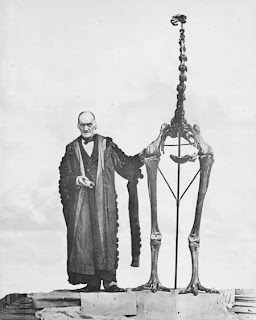 Scientists in New Zealand are using dried feces (coprolites) to investigate the diet of long-extinct moa.
Scientists in New Zealand are using dried feces (coprolites) to investigate the diet of long-extinct moa.
"Surprisingly for such large birds, over half the plants we detected in the feces were under 30 centimetres in height," says Dr Wood. "This suggests that some moa grazed on tiny herbs, in contrast to the current view of them as mainly shrub and tree browsers. We also found many plant species that are currently threatened or rare, suggesting that the extinction of the moa has impacted their ability to reproduce or disperse."The BBC has a photo of some of the coprolites, which apparently could be quite large – up to 15 centimeters long (i.e., about 6 inches) and 250 kg.
"New Zealand offers a unique chance to reconstruct how a `megafaunal ecosystem' functioned," says Professor Alan Cooper, Director of the Australian Centre for Ancient DNA, which performed the DNA typing.
"You can't do this elsewhere in the world because the giant species became extinct too long ago, so you don't get such a diverse record of species and habitats. Critically, the interactions between animals and plants we see in the poo provides key information about the origins and background to our current environment, and predicting how it will respond to future climate change and extinctions."



